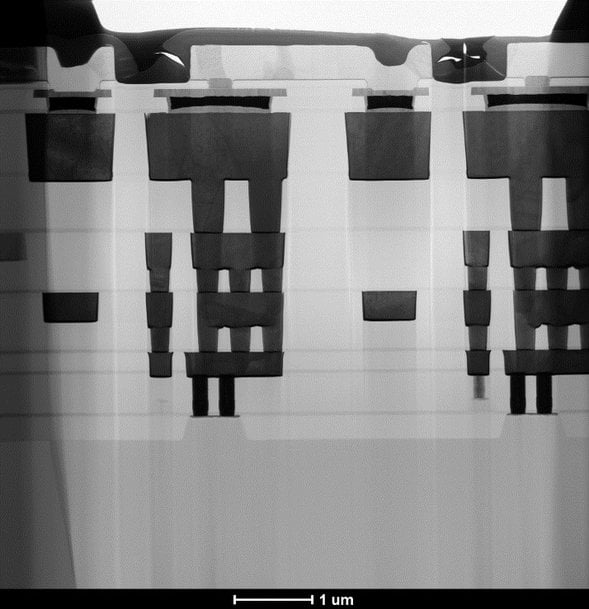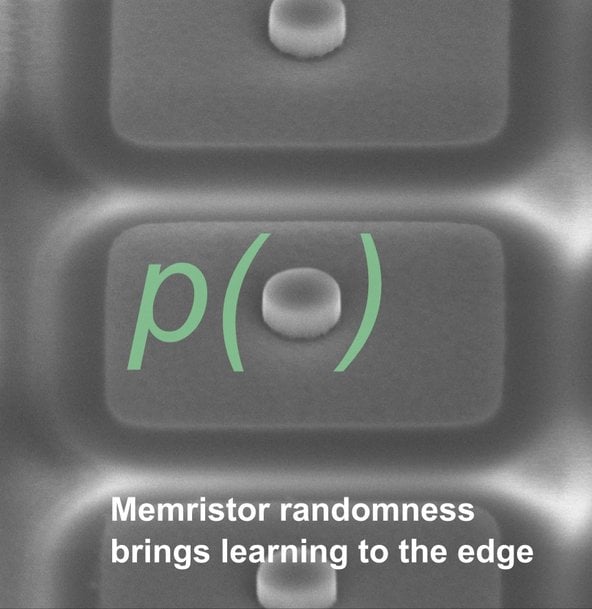CEA-Leti Reports Machine-Learning Breakthrough That Opens Way to Edge Learning
CEA-Leti scientists have demonstrated a machine-learning technique exploiting what have been previously considered as “non-ideal” traits of resistive-RAM (RRAM) devices, overcoming barriers to developing RRAM-based edge-learning systems.

- Article in Nature Electronics Details Method that Takes Advantage of RRAM Non-Idealities
- To Create Intelligent Systems that Have Potential Medical-Diagnostic Applications
Reported in a paper published in the January issue of Nature Electronics titled, “In-situ learning using intrinsic memristor variability via Markov chain Monte Carlo sampling”, the research team demonstrated how RRAM, or memristor, technology can be used to create intelligent systems that learn locally at the edge, independent of the cloud. The learning algorithms used in current RRAM-based edge approaches cannot be reconciled with device programming randomness, or variability, as well as other intrinsic non-idealities of the technology.
To get around that problem, the team developed a method that actively exploits that memristor randomness, implementing a Markov Chain Monte Carlo (MCMC) sampling learning algorithm in a fabricated chip that acts as a Bayesian machine-learning model.
The article notes that while machine learning provides the enabling models and algorithms for edge-learning systems, increased attention concerning how these algorithms map onto hardware is required to bring machine learning to the edge. Machine-learning models are normally trained using general purpose hardware based on a von Neumann architecture, which is unsuited for edge learning because of the energy required to continuously move information between separated processing and memory centers on-chip.

Intensive research in the microelectronics industry is currently focused on using RRAM as non-volatile analog devices in hardware-based artificial neural networks that can allow computation to be carried out in-memory, to drastically reduce these energy requirements. RRAM has been applied to in-memory implementations of backpropagation algorithms to implement in-situ learning on edge systems. However, because backpropogation requires high-precision memory elements, previous work has largely focused on how RRAM randomness can be mitigated – often necessitating energy-intensive techniques.
The CEA-Leti-based team’s breakthrough was an approach capable of leveraging this randomness, instead of trying to prevent it, and allowing in-situ learning to be realized in a highly efficient fashion through the application of nanosecond voltage pulses to nanoscale memory devices. This culminated in an extremely low-energy solution. The team explained that, relative to a CMOS implementation of its algorithm, the approach requires five orders of magnitude less energy. That is the rough equivalence of the difference in height between the tallest building in the world and a coin lying on the ground.
As a result, this approach is capable of bringing learning to edge-computing systems, which is impossible using existing commercial approaches. Such an application could be an implanted medical system that locally updates its operation based on the evolving state of a patient. To run a representative test of learning at the edge in such an environment, the team experimentally applied RRAM-based MCMC to train a multilayer Bayesian neural network to detect heart arrhythmias from electrocardiogram recordings – reporting a better detection rate than a standard neural network based on a von Neumann computing system.
“This highlights that, beyond being RRAM-compatible, Bayesian machine learning offers an alternative modelling method that appears well suited to the characteristics of edge learning,” the article says.
The team also applied their experimental system to solve further classification tasks including the diagnosis of malignant breast-tissue samples.
“Our system could be used as the foundation for the design and fabrication of a standalone and fully integrated RRAM-based MCMC sampling chip, for applications outside the laboratory,” the authors of the article conclude. That achievement will finally open the door to edge learning and an entirely new set of applications.
www.leti-cea.com

